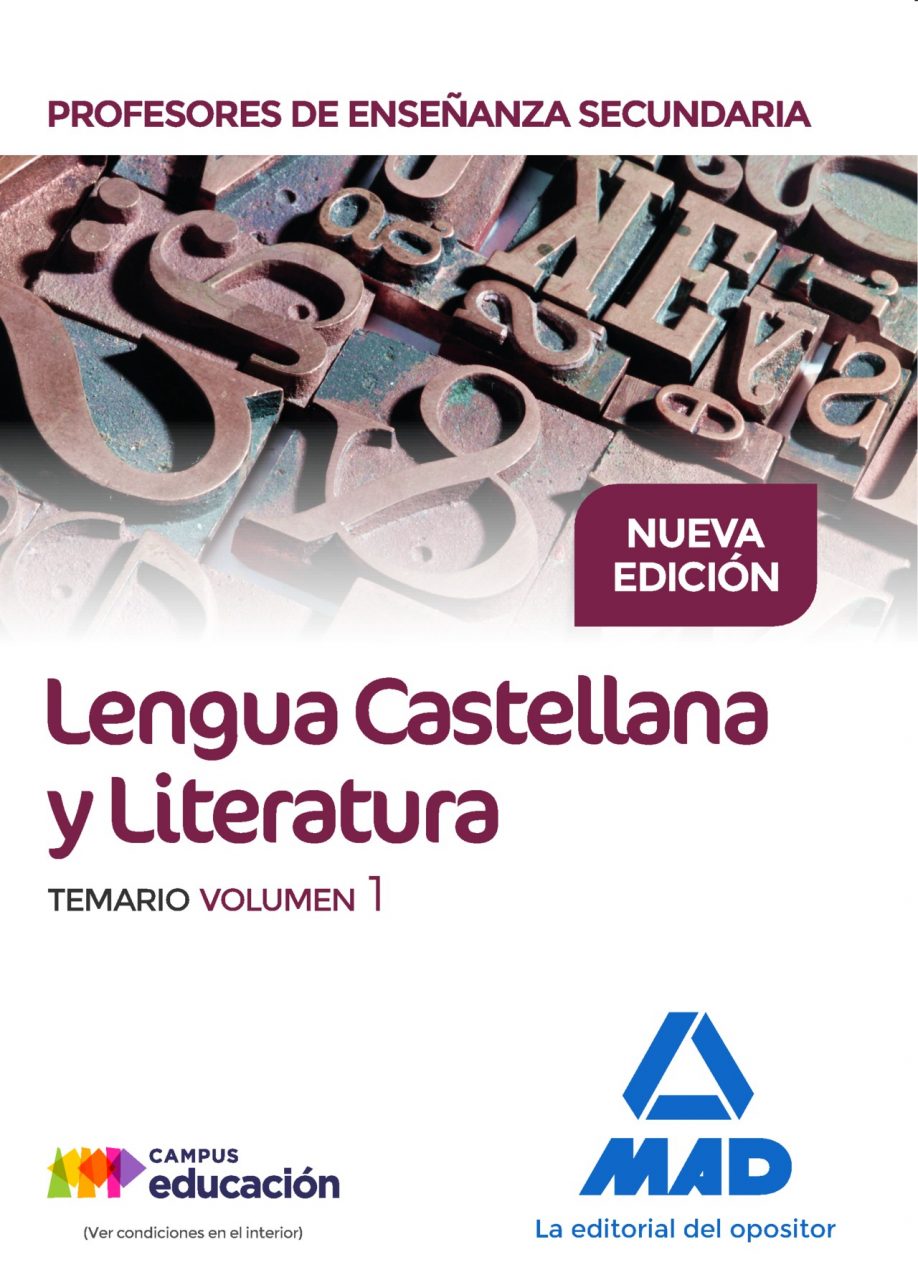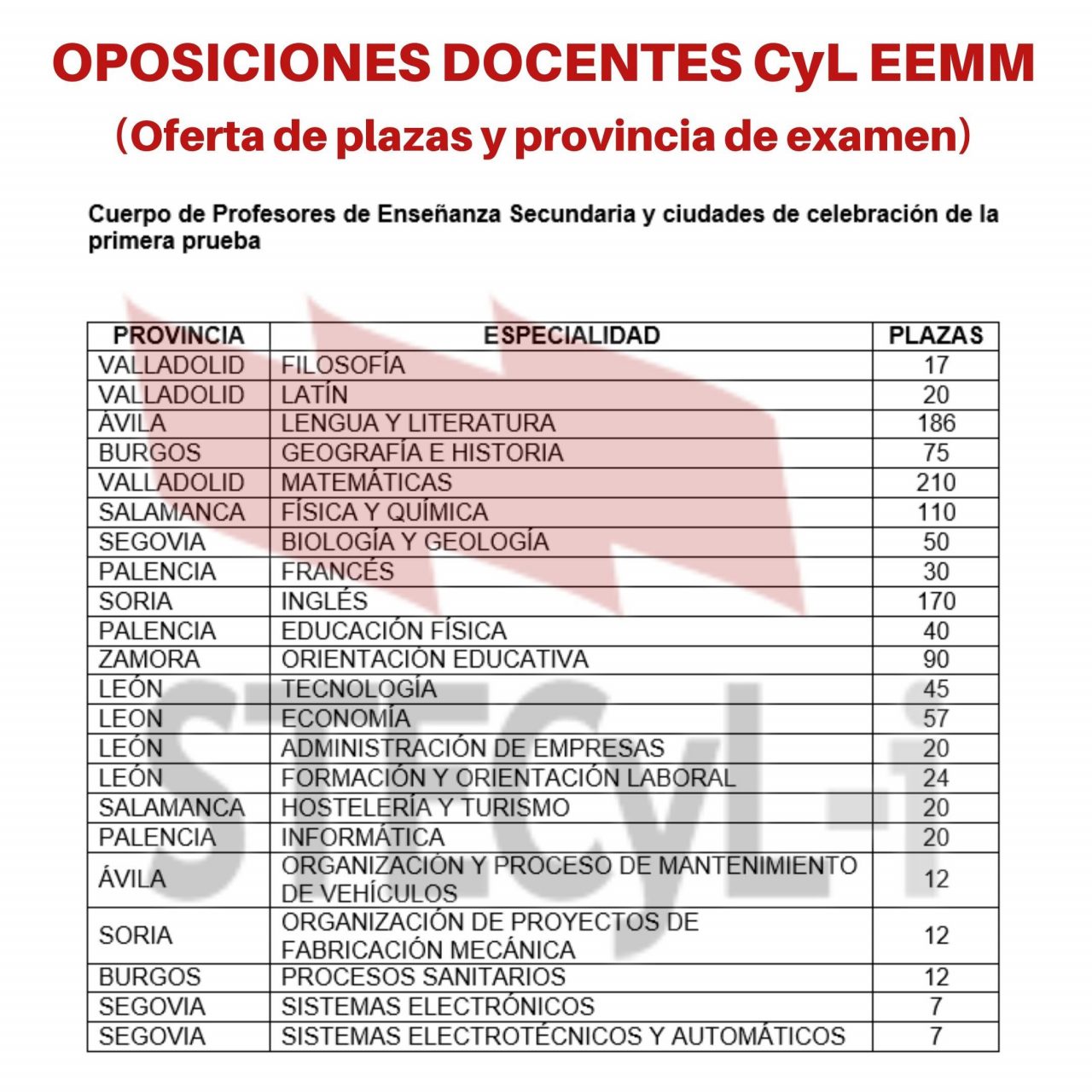
Temario oposiciones profesor secundaria lengua y literatura
Temario oposiciones profesor secundaria lengua y literatura
Contenidos
syllabus for the competitive examinations cen
The syllabus of the competitive examinations of Language and Literature is the official document that establishes the topics around which this selective process revolves. Relying on a properly prepared syllabus is essential for all the tests of the competition, not only the topic development.
Our competition is a long-distance race. It is not a question of being fast or the first, but of being constant in the study. It is necessary to optimize time and effort because, in the end, we will reach the finish line. How to start studying the syllabus, how to start organizing oneself?
It is important to select the sources of information, whether they are books or articles published on the Internet, that is to say, it is necessary to have a clear reference of the works that I am going to use. It is not a question of using many, but of knowing which ones I know well and which ones are appropriate.
language and literature topics for secondary school
The specialty of language and literature is usually very vocational and almost all the opponents come from a career of letters with a firmly established bases, so following these tricks will not cost them too much work.
In this case, if you are one of those who master the subject to perfection, making your own topics will benefit you when it comes to reviewing content and preparing for the acid test. Below is an approximate breakdown of the topics that your exam will include, so that you can begin to prepare thoroughly for all the topics or those you choose.
There are millions of methods to study a syllabus, but when it includes 72 topics, as in the case of language and literature, we must look for alternatives, especially to the method of “studying by heart”, since we could go completely crazy if we try to study each of the 72 topics that are included in our opposition. If you study in this way, you run the risk that at the time of the exam you could be left blank and all the time spent studying could be a disappointment. Therefore from Opositer we advise you to make concept maps, it is a reliable study technique proven to help you relate concepts, themes and ideas. To make these concept maps you have to follow a series of steps, you can consult this link to develop a concept map tailored to your needs.
5 subjects of language and literature
The specialty of language and literature is usually very vocational and almost all candidates come from a career of letters with a firmly established basis, so following these tricks will not cost them too much work.
In this case, if you are one of those who master the subject to perfection, making your own topics will benefit you when it comes to reviewing content and preparing for the acid test. Below you will find the approximate breakdown of the topics that will be included in your exam, so that you can start preparing in depth all the topics or those that you choose.
There are 5 simple steps that although they seem obvious if you follow them to the letter with each of the sections of each topic, you will learn to explain in your own words theoretical concepts and therein lies the richness of your knowledge and that will be a differentiating point in the face of your oppositions.
Yes, you are reading well, we can be cautious, but in a competition that decides your professional future, we think it is worth it, don’t you? Therefore, we advise you that once you have done the review aloud, you have experienced the fears of describing your own knowledge and you have seen how you face them, you should do a final review of each topic in writing. For the
themes for language and literature competitive examination
In order to successfully pass the secondary education competitive examinations, it is essential to pass the competition-opposition in which the syllabus plays a fundamental role. In the following article we show you the updated syllabus for the Spanish Language and Literature competitive examinations.
The Language and Literature competitive examinations consist of two tests. In the first one, the applicant must demonstrate his/her specific knowledge of the teaching specialty and, in the second one, he/she must present the didactic programming. This is explained in detail below.
The purpose of this test is to verify the applicant’s pedagogical aptitude and his/her mastery of the techniques necessary for teaching, and will consist of the presentation of a didactic program and the preparation and oral presentation of a didactic unit:
The overall score of the competitive examination will result from the weighting of the scores of the competitive examination and competitive examination phases, being 60% for the competitive examination phase and 40% for the competitive examination phase.



